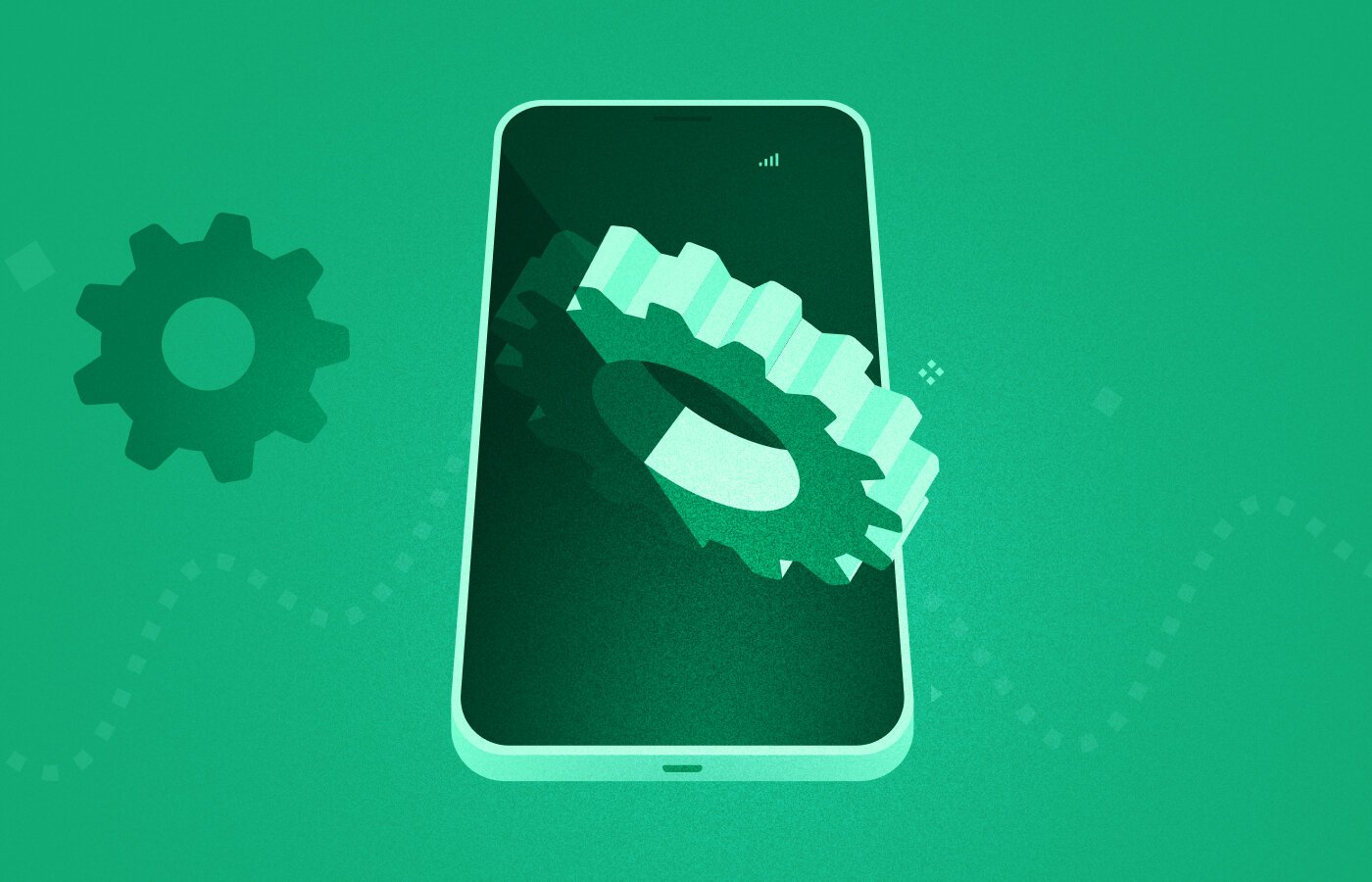blog
Mobile App Development Challenges: 5 Tough Challenges Creators Face
By Mohan S App development Customer Experience June 29, 2023

Developing a mobile app may seem straightforward until you begin.
In reality, it can present a complex landscape of technical, design, and business challenges. From translating the idea to code with platform-specific nuances across iOS and Android to scaling infrastructure efficiently, mobile development demands efficient execution.
And then come addressing critical areas like user retention and monetization strategies. Success requires more than just coding, it’s about navigating a multifaceted process with speed and clarity. Here’s a closer look at the challenges of mobile app development and how to overcome them.
Top challenges in mobile app development
App development challenges directly impact the project cost breakdown, as overcoming obstacles often requires additional time to build the app, resources, or specialized skills.
Proactively addressing these challenges increases the likelihood of delivering high-quality, successful mobile applications that meet user needs and expectations and also save on the cost of app mobile app development.
UI/UX Challenges and Device Fragmentation
Designing mobile apps that work seamlessly across a wide range of devices, screen sizes, and operating systems is one of the most persistent challenges in app development. Variations in hardware, display resolutions, and touch interactions make it difficult to ensure both functional compatibility and a consistent user experience.
How to Tackle UX Challenges
Responsive & Adaptive Design: Use responsive design to adjust layouts fluidly across screen sizes and adaptive layouts to tailor interfaces for specific breakpoints and devices.
Comprehensive Testing: Test rigorously using emulators, simulators, and real devices to uncover layout or interaction issues across environments.
Designing for Usability: Account for screen variation, accessibility needs, and intuitive touch interactions to ensure usability across the board.
Iterative & User-Centered Process: Rely on prototyping and continuous user testing to uncover pain points and refine experiences. This feedback loop helps build interfaces that feel natural and consistent across devices.
By combining these strategies, teams can navigate device fragmentation without sacrificing quality or user experience.
Delivering good performance
To ensure user satisfaction and the overall success of the app, mobile app development must optimize for outstanding performance.

Slow load times, lag, or crashes can quickly lead to user drop-off, harming engagement and the app’s reputation. Performance optimization isn’t just a technical requirement - it’s central to an app’s success.
Key Challenges
Memory Management: Poor memory handling leads to slowdowns and crashes. Apps must manage resources efficiently, minimize leaks, and avoid memory-heavy operations.
Battery Drain: Excessive background activity, unoptimized network calls, or inefficient processes can rapidly drain battery life, frustrating users.
Network Dependence: Mobile connectivity is often unreliable. Without proper handling, poor network conditions can degrade app performance and user experience.
How to Tackle Performance Challenges
Efficient Memory Usage: Use smart caching, limit memory-intensive operations, and manage data storage effectively to keep the app running smoothly.
Optimized Background Processing: Ensure background tasks don’t interfere with the user interface. Use scheduling, prioritization, and throttling to maintain responsiveness.
Battery Efficiency: Reduce unnecessary CPU cycles, minimize background network activity, and implement adaptive power-saving techniques.
Network Optimization: Use data compression, caching, and smart syncing to reduce bandwidth usage and improve performance, even in poor network conditions.
A well-optimized app doesn’t just run faster, it feels better to use. Investing in performance ensures users stick around longer and engage more deeply with your product.
Ensuring Security and Data Privacy Challenges
With the growing risks of data breaches and cyber attacks, ensuring strong security and data privacy is essential in mobile app development. Apps often handle sensitive personal and financial data, and any lapse can lead to identity theft, financial loss, legal consequences, and long-term damage to customer trust.
Challenges
Data Vulnerability: Apps are targets for attacks, especially when data is not properly encrypted at rest or in transit.
Weak Authentication: Inadequate login systems can allow unauthorized access to user accounts.
Insecure Storage: Improper storage methods increase the risk of data leakage if a device is lost or compromised.
Privacy Compliance: Navigating and implementing privacy laws like GDPR and CCPA can be complex due to evolving requirements.
Lack of Transparency: Failing to obtain user consent or clearly communicate data usage erodes trust and violates privacy standards.
Solutions
Encryption & Secure Storage: Use strong encryption protocols and secure file systems to protect sensitive data both in transit and at rest.
Robust Authentication: Implement multi-factor authentication, biometrics, and secure login flows to safeguard user accounts.
Compliance-First Approach: Design apps with privacy regulations in mind, like incorporating user consent, data minimization, and clear retention policies.
Privacy-by-Design: Embed privacy into the development process, ensuring controls and protections are in place from the ground up.
Security Testing & Updates: Regularly perform audits, penetration testing, and deploy timely patches to fix vulnerabilities before they’re exploited.
By addressing these challenges with proactive, user-centered security strategies, apps can protect user data, maintain compliance, and earn long-term trust.
Finding the right testing solutions
Ensuring a seamless and high-quality user experience requires comprehensive testing across a fragmented mobile landscape. With countless combinations of devices, operating systems, and screen sizes, mobile app testing poses significant challenges that demand thoughtful strategy and execution.
Challenges
Device Compatibility: Varying screen resolutions, hardware capabilities, and OS versions can affect how apps behave, making consistent performance across devices difficult.
Operating System Differences: iOS and Android each require unique testing approaches due to differences in UI design, functionality, and development frameworks.
Screen Size & Resolution Variability: Ensuring consistent layouts, typography, and visual elements across various screen sizes demands thorough design validation during testing.
User-Centric Testing Complexity: Capturing real-world user experiences and usability concerns through testing can be difficult without structured feedback and user participation.
Solutions
Test Automation: Use automation frameworks to run tests across multiple devices and OS versions, improving coverage, speeding up QA cycles, and ensuring repeatability.
Cloud-Based Testing Platforms: Leverage cloud testing tools to access a wide range of real devices and environments without maintaining a physical inventory.
Test Planning & Prioritization: Focus testing efforts on high-impact devices and OS versions based on user demographics and market share to optimize resources and effectiveness.
User Acceptance Testing (UAT): Conduct UAT in real-world scenarios with clearly defined goals and criteria to validate app usability and performance from the end-user perspective.
Feedback Integration: Set up in-app feedback forms, surveys, or support channels to collect actionable insights. Use this feedback to drive iterative updates that improve usability and resolve real-world issues quickly.
By combining structured testing practices with real-user input, developers can overcome fragmentation challenges and deliver a polished, reliable mobile experience across the board.
Project management challenges
Mobile app development projects involve multiple moving parts from design and development to stakeholder input and scope management. Without effective project management, misalignment, delays, and scope creep can quickly derail progress. Success depends on strong collaboration, clear communication, and well-defined processes.
Challenges
Cross-Team Collaboration: Miscommunication between designers, developers, and stakeholders can lead to delays, rework, and inconsistent outputs. Aligning priorities and maintaining clarity is often difficult.
Design-Development Disconnect: When design intent doesn’t align with technical implementation, user experience suffers and additional revisions are required.
Stakeholder Engagement: Securing timely feedback and managing shifting expectations from stakeholders can disrupt timelines and project flow.
Scope Creep: Expanding requirements beyond the original plan increases costs, delays timelines, and dilutes the app’s focus.
Poor Change Management: Without a structured change control process, last-minute changes can introduce confusion, increase risk, and impact quality.
Solutions
Clear Communication Channels: Use project management tools, structured meetings, and collaborative platforms to ensure transparency and streamline communication across teams.
Cross-Functional Collaboration: Involve designers, developers, and stakeholders from the start. Schedule regular sync-ups to keep teams aligned and quickly address potential roadblocks.
Agile Methodologies: Adopt agile frameworks like Scrum or Kanban to support iterative development, flexibility, and continuous feedback throughout the project lifecycle.
Defined Project Scope: Clearly outline project goals, timelines, and deliverables from the outset. Ensure all stakeholders are aligned to avoid misunderstandings and shifting requirements.
Structured Change Management: Establish a formal process for handling change requests, including review, documentation, impact analysis, and stakeholder approval, to maintain control over the project.
Consistent Documentation: Track decisions, changes, and progress transparently to keep teams informed, manage expectations, and mitigate risks.
With the right project management practices, teams can stay focused, agile, and aligned, delivering successful mobile apps on time and within scope.
Conclusion
Mobile app development faces challenges such as UI/UX issues, device fragmentation, and providing superior app performance. By proactively addressing these challenges, mobile app development teams can deliver high-quality apps, provide excellent user experiences, and make sure that app development project is a success.




